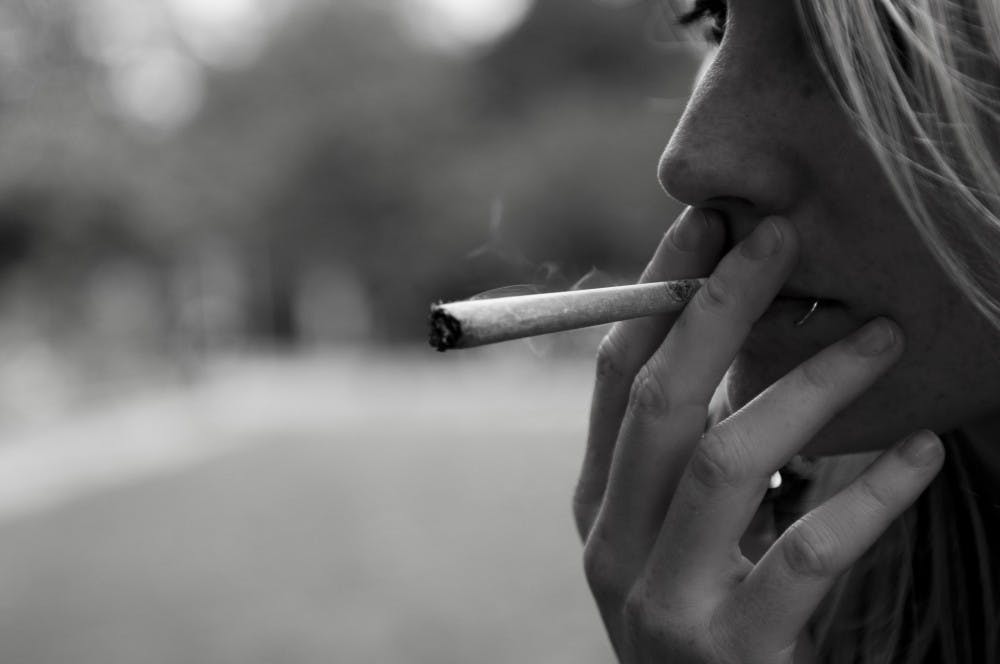Researchers at the University of Michigan have discovered that marijuana use in college has been increasing during the past decade. One of the chief causes for the increase in marijuana use could be the decrease in students’ perception that marijuana use leads to harm.
In 2006, 30 percent of students said they used marijuana in the past year, but that number has since increased to 38 percent in 2015.
Additionally, daily marijuana use (20 or more times in the past 30 days) has increased by almost 70 percent from 2007 to 2014.
“Given the stresses of the 21st century, whether they be the intense academic environment or the increasingly hard-to-navigate social scene, marijuana helps me mellow out and escape my own mind for just a few hours a day,” a student at Hopkins who is a daily user of marijuana and wishes to remain anonymous said in an interview with The News-Letter.
“This increase in use and decrease in perceived risk of harm regarding marijuana use should be taken seriously by college administrators, parents and students themselves. We know through other research that frequent marijuana use can adversely affect academic performance and college completion,” John Schulenberg, researcher at the University of Michigan’s Institute for Social Research, said in a press release.
In fact, a study conducted in 2015 showed that only 33 percent of college students believed that marijuana use was harmful. This is a drastic change from popular opinion from 2003, when 58 percent of undergraduates thought that marijuana was a dangerous substance.
“Growing up, I never wanted to smoke. But seeing how much more accepted [smoking marijuana] is in today’s society, I tried it last week. I don’t think I’ll be a consistent user, but I definitely don’t feel negative towards those who smoke daily anymore,” a Hopkins student who chose to remain anonymous said.
Despite the increasing use of marijuana, usage of other drugs has relatively decreased over the past decade.
“It appears that college students, at least, are heeding the warnings about the very considerable dangers of using narcotic drugs,” Lloyd Johnston, researcher at the University of Michigan’s Institute for Social Research, said in a press release.
Indeed, nonmedical use of prescription narcotics has decreased from 8.8 percent of college students reporting them in 2006 to 3.3 percent in 2015. Additionally, the usage of amphetamines has fallen to 9.7 percent in 2015 from 11.1 percent in 2012.
The use of other drugs like synthetic marijuana and MDMA, also known as ecstasy or “Molly,” have also fallen in the most recent data. However, drug use in males remains higher than drug use in females.
The decrease in drug use prevails across legal drugs such as tobacco and alcohol as well. Cigarette smoking has decreased from a high of 31 percent in 1999 to 11 percent in 2015, the lowest rate it has ever been since it was first measured.
While alcohol use remains very common, since 79 percent of college students claim that they have had a drink at least once in the past year, and 63 percent say so for the past month, these numbers actually represent a decrease since their peak in the early 1980s.
Meanwhile, 40 percent of college students reported that they had binged on alcohol (five or more drinks on a single occasion). Furthermore, about 11 percent of students reported that they had 10 or more drinks on one occasion in the past two weeks, a term called “extreme binge drinking.”
“Of even greater concern than binge drinking is what we have called ‘extreme binge drinking,’ defined as having 10 or more drinks on at least one occasion in the prior two weeks. Drinking at these levels can result in alcohol poisoning, serious accidents and a host of unwise and dangerous behaviors. So this remains a serious problem to be addressed,” Johnston said in a press release.
Although drug education has come a long way, as evidenced by the decreases in use across almost every type of drug, it seems that students should be educated more in order to address any problems associated with marijuana and alcohol use.





